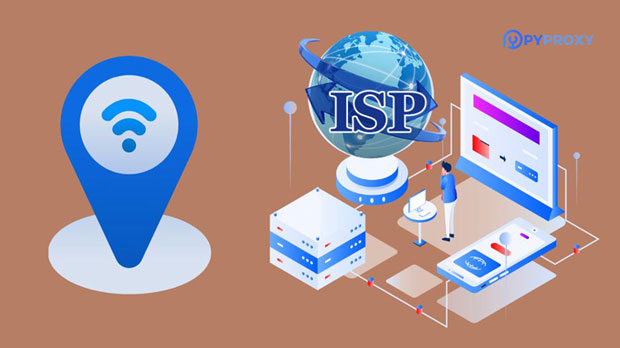When comparing the socks5 proxy services of ProxyRack and PYPROXY, the performance differences are substantial, making it crucial for businesses and individuals to make an informed choice based on their specific needs. sock s5 proxies are known for their flexibility and ability to handle a wide range of applications, from browsing to gaming and streaming. However, not all SOCKS5 proxies are created equal. ProxyRack and PyProxy offer distinct advantages and drawbacks that can affect connection speed, reliability, and security. In this article, we will delve into the key performance aspects of these two services, including connection speed, latency, uptime, and security protocols, helping users decide which is more suited for their requirements. Introduction to SOCKS5 Proxies and Their ImportanceSOCKS5 proxies are among the most versatile types of proxies, often used for bypassing geo-restrictions, securing online activities, and masking a user's IP address. The SOCKS5 protocol is highly valued for its ability to support a variety of traffic, including HTTP, FTP, and other types of internet communications. It is not as restrictive as its predecessor, SOCKS4, and is ideal for users who need to route diverse types of internet traffic without compromising performance.In this context, ProxyRack and PyProxy have become popular choices for SOCKS5 proxy services. Both providers offer a range of proxies designed to meet different use cases, from personal browsing to large-scale web scraping. However, the performance of these services can vary significantly, influencing the quality of user experience and the efficiency of tasks that rely on fast and secure internet connections.ProxyRack and PyProxy: Key Differences in SOCKS5 Proxy ServicesWhile both ProxyRack and PyProxy offer SOCKS5 proxies, there are several differences in terms of performance, pricing, and additional features that are crucial for users to consider.1. Connection Speed and LatencyConnection Speed is a critical factor for users who rely on proxies for tasks such as streaming, gaming, or web scraping. Speed is determined by several factors, including the server's geographic location, network infrastructure, and overall server load. - ProxyRack's Performance: ProxyRack generally offers high-speed connections for SOCKS5 proxies, particularly in regions like North America and Europe. The service utilizes a robust infrastructure and offers a wide range of servers to choose from. However, users may experience fluctuations in speed depending on the specific server they are connected to. Servers with lower traffic tend to provide faster speeds, while heavily loaded servers may result in slower connections and higher latency.- PyProxy's Performance: PyProxy also offers solid connection speeds, but its performance tends to be more consistent across various locations. With its large server network spread globally, PyProxy can often provide better speeds in areas with high demand, such as Asia and North America. However, some users have reported occasional speed dips during peak hours due to congestion on certain servers.Latency is another critical consideration, especially for activities that require real-time responses, such as online gaming or trading.- ProxyRack's Latency: ProxyRack’s latency tends to be low in regions with a good server infrastructure. However, the latency can increase if users connect to distant servers or if the network experiences high traffic at specific times.- PyProxy's Latency: PyProxy generally provides lower latency across its server network, making it a more suitable choice for users who need consistent and fast performance. However, like ProxyRack, latency may increase during peak traffic periods.2. Uptime and ReliabilityReliability is a key concern for any proxy service, especially when businesses rely on proxies for web scraping, data collection, or other critical tasks. A service with frequent downtimes can severely disrupt operations.- ProxyRack's Uptime: ProxyRack boasts a solid uptime, with most servers running smoothly. However, users have occasionally reported short-term disruptions due to maintenance or network issues. The service also provides automatic failover mechanisms, ensuring that users can connect to an alternative server if one goes down.- PyProxy's Uptime: PyProxy is renowned for its reliability, with a 99.9% uptime guarantee. This makes it an attractive option for businesses that need uninterrupted access to proxies. PyProxy has a larger server infrastructure compared to ProxyRack, which helps reduce downtime due to server overloads or maintenance.3. Security and Privacy FeaturesSecurity and privacy are critical factors when choosing a proxy service, especially when dealing with sensitive data or performing activities that require anonymity.- ProxyRack's Security Features: ProxyRack offers SOCKS5 proxies with robust encryption and privacy features. It allows users to route their internet traffic through secure channels, protecting sensitive information. However, some users report that the encryption may slow down their connection speeds slightly, as it adds overhead.- PyProxy's Security Features: PyProxy also provides secure SOCKS5 proxies, with additional features such as IP rotation and anti-fingerprint technology, ensuring users' anonymity. PyProxy’s security protocols are designed to minimize the risk of IP blocking, making it a reliable option for tasks like web scraping.4. Pricing and Cost EfficiencyCost is always a consideration when selecting a proxy service, especially for users who need to scale their operations or use proxies for extended periods.- ProxyRack's Pricing: ProxyRack offers competitive pricing, with various plans that cater to different needs. However, its pricing model can be slightly more expensive for high-usage customers who require access to premium servers or a large number of proxies.- PyProxy's Pricing: PyProxy’s pricing tends to be more flexible, offering various packages that suit users with different requirements. While some users may find the service slightly more expensive than ProxyRack, the higher pricing is often justified by the added benefits such as a larger server network and better performance during peak hours.Conclusion: Which SOCKS5 Proxy Service is Better?When deciding between ProxyRack and PyProxy, the choice ultimately depends on the specific needs of the user. ProxyRack may be more suitable for those who need high-speed connections in specific regions and are willing to tolerate occasional fluctuations in performance. It is an excellent choice for personal use, small businesses, or users who do not require extensive server options.On the other hand, PyProxy’s larger server network, more consistent performance, and added security features make it a better choice for businesses or users who require uninterrupted service, particularly in regions with high traffic. Its more reliable uptime and lower latency in global regions also give it an edge in competitive use cases such as web scraping or large-scale data extraction.In conclusion, both services offer strong SOCKS5 proxy solutions, but the best choice depends on whether speed, reliability, security, or cost is your top priority. By understanding the unique strengths of each service, users can make a well-informed decision that best fits their requirements.
Oct 23, 2025



































































